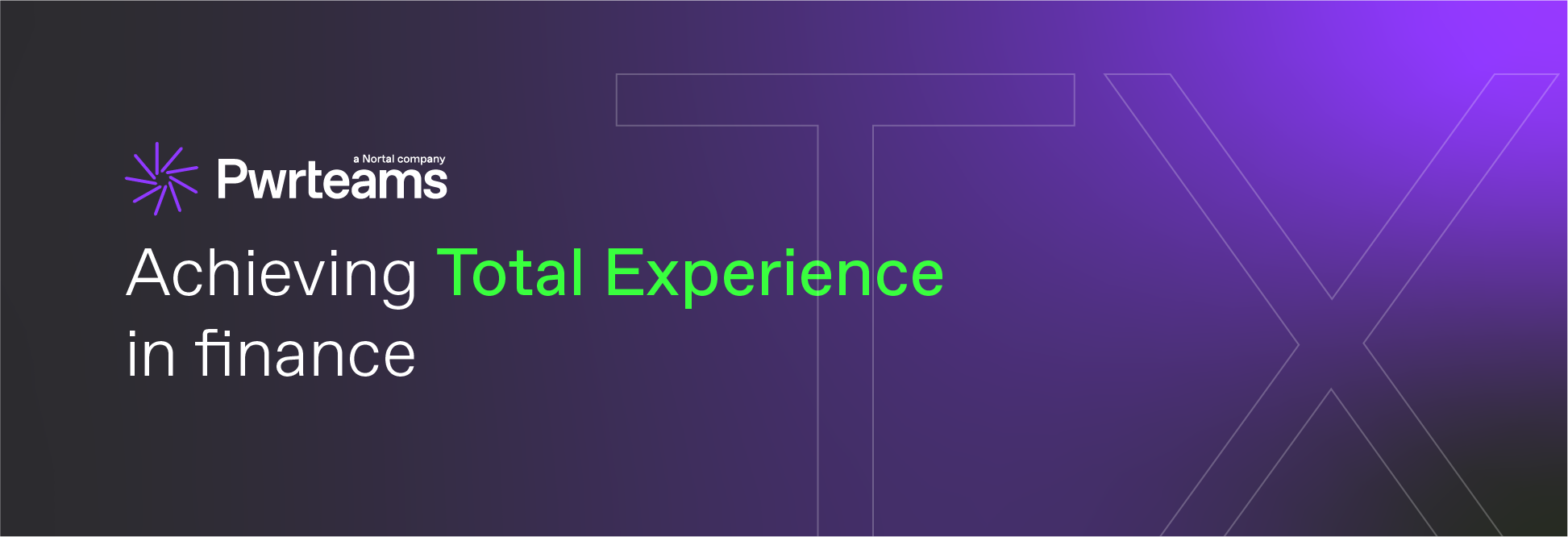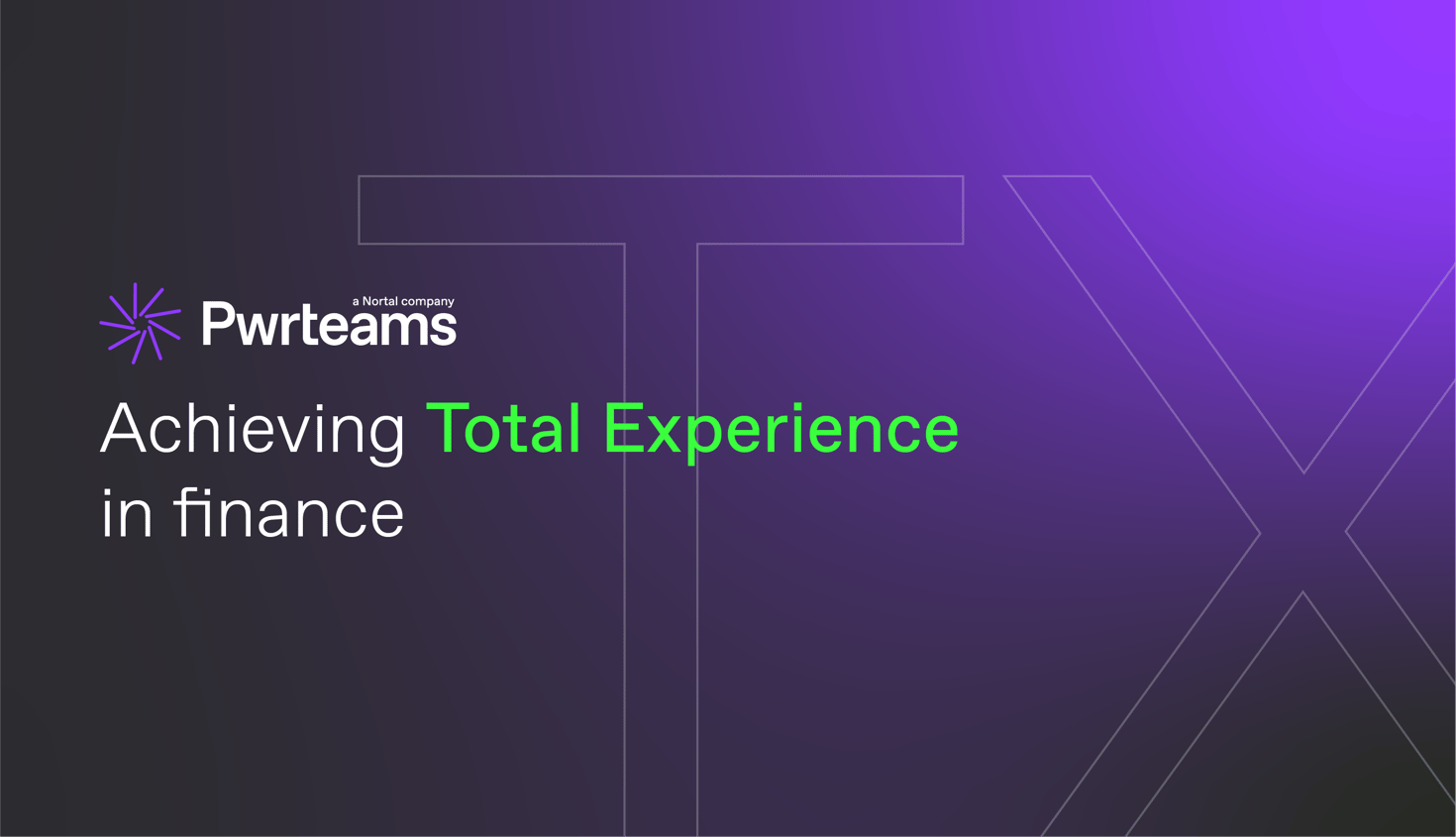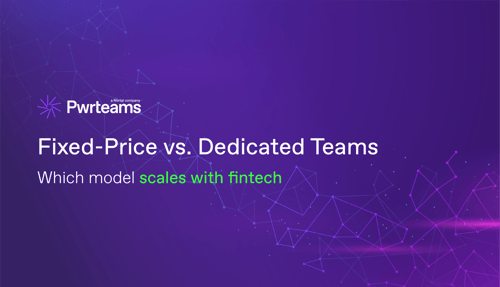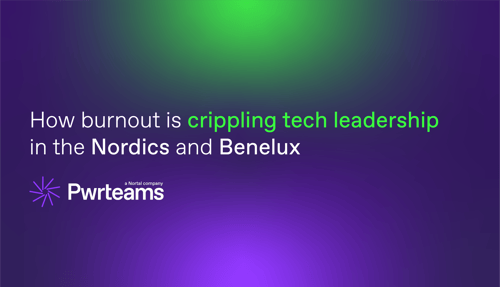Why does total experience (TX) matters in finance?


Bank numbers are dropping, but competition in financial services has never been fiercer. Just look at the EU. Since 2009, the number of banks has steadily declined, from 5,441 in 2020 to just over 4,800 in 2024. Yet, this doesn’t mean there’s less pressure in the market.
As more customers turn to digital finance options for greater freedom, personalisation, and convenience, banks and credit unions innovate at double paces to exceed their rising expectations. In Europe alone, €10 trillion worth of savings deposited in their accounts is at stake, with more money locked in other financial products.
Banks aside, financial institutions have their own share of challenges, from peer-to-peer lenders’ stagnant revenue to insurance companies’ battles with the aftermath of extreme (and increasingly frequent) weather events. While their struggles are complex and multi-faceted, the key to secured profitability is one – customer satisfaction. Total experience (TX) offers the path to lead them there. Explore how it achieves that, learn about its key components and impact on financial customers and employees, and how dedicated teams can implement it effectively.
Why total experience (TX) matters in finance
Total experience (TX) is a business strategy that aims to improve the experience of all parties involved in business interactions, such as customers, users, and employees, across all channels. Technology is a catalyst that brings all their experiences together.
And while as such, TX is industry-agnostic, it offers unique advantages to financial organisations, as its core objectives are improving the human experience, increasing operational efficiency, and building trust. Especially the two latter factors play major roles in the world of finance.
Let's take loans as an example. The traditional customer journey from application to disbursement is often disjointed, rigid, impersonal, and lengthy. You typically have to fill out a mountain of forms and deal with back-and-forth communication through emails and phone calls. Even if you don't have to go to a bank in person, you're still faced with multiple steps to get generic rates and offers that don’t really take your unique situation into account.
On the lenders’ side, the fragmented customer view and lengthy processes entail higher risks and missed opportunities – like the chance to offer personalised deals or bundled financial products. So, in the end, both sides lose, even if the loan is granted.
Now, what does the same process look like with total experience?
You grab your phone, log into your bank, and effortlessly complete an online form. With just a digital signature, your data is securely pulled from the CRM, and AI analyses everything to generate personalised loan offers tailored just for you and your personal goals. Have any questions? Head to a chat or call. Best of all, you’ll often get the loan within minutes and funds immediately upon approval. It’s all part of a thrilling, total experience!
Seeing this and other examples of TX application in finance, it’s unsurprising that companies that get TX right are expected to lead their competitors by as much as 25% in CX and EX satisfaction by 2024 (Gartner). Another global survey by HCLTech across industries revealed that 46% of C-level executives have seen higher profitability upon implementing personalised experiences.
Tools like AI analytics, automation, and cybersecurity platforms are enablers of this change. However, to bring cohesion into every step of the customer, user, and employee experience, they require a mix of business acumen and tech expertise that team augmentation can provide. Now, let’s review a few examples.
What is total experience (TX)?
Total experience, TX in short, brings together customer experience (CX), employee experience (EX), and user experience (UX) to create a unified approach across multiple channels (multi-experience, MX), meeting customers’ demands while driving efficiency across your organisation.
This human-centric strategy aims to improve how people, technology, and businesses interact. It achieves this by offering strategies that personalise and connect everyone's experiences, using technology as the central hub. At the same time, TX inspires users and beneficiaries to engage fully and make the most of it.
The top benefits of total experience, as quoted by business leaders, include:
- improved customer loyalty and satisfaction,
- better teamwork,
- greater staff productivity,
- lower costs,
- streamlined planning,
- enhanced products and services,
- and higher returns.
Customer experience (CX)
Determines customers’ impressions of interacting with a brand and how they feel about it. For banks and financial institutions, refining CX and connecting it with other TX elements means providing customers with more convenient, digital and mobile self-service options, decreasing their wait times for service delivery, and providing employees with rich customer context so that all interactions are prompt, efficient and individualised.
Employee experience (EX)
Employee experience is all about job satisfaction, feeling of fulfilment and purpose, and empowerment. As a core component of total experience, EX bestows employees with technology and data to be proactive, quickly and efficiently resolve issues, and measure and enhance the quality of their work to nurture a sense of professional and personal accomplishment.
User experience (UX)
User experience optimisation in total experience reduces friction for users – all users, business and tech, front-end, back-end and clients, without any discrimination – in their use of enabler technologies that connect their experiences. The goal is simple – make digital and mobile tools simple and accessible for all and guide users from the first touchpoint all the way to achieving their goal, whatever it might be.
Multi-experience (MX)
This term refers to improving the general experience across all touchpoints, interfaces and devices. This includes accessibility features, various usage modes, like tactile, voice, or visual, and integration of different channels across screens and devices into a coherent journey.
Driving customer engagement through TX
TX puts customers at the core of every product and every decision. To achieve this, all customer data must be aligned, organising information collected from various digital and offline touchpoints into a cohesive view.
That’s why the TX infrastructure frequently includes advanced, multi-faceted CRM (Customer Relationship Management) systems such as Salesforce, Microsoft Dynamics or HubSpot. They gather, analyse, and organise vast customer data from multiple sources for a transparent and complete view. These insights, enhanced by behavioural analyses, predictions based on similar customer profiles and external factor assessments, allow financial organisations to tailor advice, customise offers, and create targeted communications while spending radically less time on admin work.
CRM platforms use sophisticated algorithms to uncover patterns in customer behaviour. Their AI-driven predictive analytics can anticipate financial needs based on life events, spending habits, and past interactions. For example, CRM insights can enable your team to proactively offer mortgages or savings plans as customers' circumstances change.
When properly configured, CRM systems can also empower sales and marketing teams in your organisation to create highly personalised, targeted campaigns to nurture existing leads and increase their value. That’s how Lendio, an SME lender, used HubSpot. By tapping into its analytics, the company identified points in the loan application process where customers commonly disengaged and used automated email sequences to re-engage them. As a result, they closed 58% more deals and scored a 618% increase in completed loan applications.
But CX in finance is not just about CRM. AI-driven software solutions, like SAS and IBM Watson, open up a world of possibilities for enhancing service quality and risk management. They use machine learning models to detect fraud patterns in real-time, evaluate credit scores with increased accuracy, and help anticipate customer needs. Imagine the value of alerting a customer of potential risk or offering a preemptive financial solution based on predictive trends! Such a level of service strengthens customer trust and keeps you a step ahead of your competition.
This is how one of our clients transformed their operations with an AI-powered price prediction engine. They turned to us, needing specialists who are apt in modern technologies, understand security concerns, and are familiar with the complex regulatory landscape. Led by our data science expert, the company’s team developed a solution leveraging problem classification algorithms and a supervised learning framework. The tool not only predicted pricing with high accuracy but also provided a real-time market analysis and insights into volatility, enabling smarter, faster decisions and driving measurable outcomes.
Don’t just react to your customers. With AI and machine learning experts by your side, you’ll gain the ability to predict needs, mitigate risks, and deliver impactful experiences that define the future of financial services.
Our finance-focused specialists bring deep expertise across banking, insurance, asset management, and fintech, ensuring seamless integration and immediate contributions to your projects. From advanced automation to enhanced security, we provide the technology and talent risk-free, with no time or volume commitments, hidden fees, exit costs, or binding contracts.
Empowering employees with technology
Proactive customer engagement, personalised offers and risk elimination (which also helps maintain trust and exudes professionalism) are all integral parts of customer experience. But they also help shape positive EX. With smart data solutions, your teams can move from responding to things as they happen to getting ahead of customer needs and spotting potential risks before they occur. This gives them greater control over their work, boosts motivation and satisfaction, and helps them achieve better outcomes, all in line with the principles of employee experience.
Business Intelligence (BI) and data analytics tools like Tableau and Power BI empower financial professionals with actionable insights into customer behaviour, market trends, and potential risks, attaining complexity inaccessible to a human analyst. This data fosters a holistic view of clients and boosts employee productivity by eliminating frustrating bottlenecks.
With real-time insights, your teams can make smarter decisions faster and serve customers more effectively. For instance, a mortgage advisor with access to smart customer dashboards can proactively suggest financial products for clients nearing the end of their amortisation period, while an insurance agent can easily adjust coverage based on changing patterns in customer behaviour that may affect their insurance needs, such as purchasing a home, having a baby or retiring.
And digging into real-life examples, just look at how KeyBank has harnessed the power of Tableau to turn vast amounts of customer data into actionable insights accessible across branches. Now, they connect all employees and strengthen them individually and as a team. This transformation has empowered customer-facing staff to offer tailored services, engage clients with relevant products, and make informed real-time decisions. Managers, on their end, gained deep insights into their teams' work, enhancing productivity and improving overall performance.
With our extensive network of vetted tech specialists and over 120 roles filled in finance tech, we can quickly provide you with the essential mix of experts who will seamlessly integrate BI tools with your existing systems. Working with your team, they will set up intuitive, role-specific and data-driven dashboards and keep optimising them to meet your current needs and ensure total experience across all channels, users, and roles.
Building trust with security and compliance
In finance, as in TX, every interaction must be trusted, and every operation must feel safe and reliable. Advanced cybersecurity tools like Darktrace and Splunk enable your institution to effectively monitor network traffic, detect anomalies, and thwart potential breaches, safeguarding sensitive customer and institutional data from ever-evolving cyber threats. For example, by implementing the Darktrace platform, Direct Federal Credit Union identified critical vulnerabilities, such as misconfigured assets and insecure third-party connections, learning to neutralise threats and maintain operational flow.
But how does this tie into total experience? Applying strong security measures creates a seamless, secure experience for your clients, easing their potential concerns. Feeling more confident, customers are more likely to use your financial services, especially via mobile and digital channels. A high sense of safety enhances their total journey and positively impacts loyalty, engagement and satisfaction, the key components of TX.
Achieving the top level of security requires fintech-specific expertise to ensure the seamless integration of tools into your infrastructure. Our dedicated teams work alongside your in-house experts to design tailored solutions, from automating compliance checks to building secure data pipelines. With experience across AI, blockchain, and cybersecurity, our specialists bring proven fintech knowledge to your business, minimising onboarding time and maximising immediate impact on your operations.
With the right technology and people in place, you can deliver a proactive, fully integrated defence strategy that protects sensitive data and strengthens the trust essential for a successful TX initiative.
The past and present of finance and banking with total experience |
||
|
Aspect |
Before TX |
With TX |
|
Customer experience |
Transactional, slow, impersonal, rigid |
Personalised, immediate, high-touch, empathetic |
|
Employee experience |
Labour-intensive, error-prone, frustrating |
Streamlined, productive, rewarding |
|
Customer knowledge |
Fragmented, duplicated, separated |
Comprehensive, transparent, shared |
|
Processes |
Manual, paper-based or digital but disjoint |
Automated, hybrid or fully digital, efficient |
|
Personalisation |
Limited, generic, service or product-focused |
Granular, customer-centric |
Dedicated teams will make it easier for you. Get in touch now with our team to learn how we can connect your customer, employee and user experience across all channels.
The impact of TX on financial institutions
The total experience fundamentally transforms how banks and financial institutions engage with their customers, empower employees, and drive value at every touchpoint. With rising demands for personalised, efficient, and secure interactions, TX has become essential for financial institutions aiming to stay competitive.
Yet, successful TX requires more than just technology. It demands top-tier tech talent capable of turning technology vision into customer engagement. This involves customising CRMs, developing AI-driven solutions, automating workflows, and fortifying cybersecurity with precision and speed. Fintech-specialised tech teams are vital to ensure that your institution doesn't just keep pace but leads the way, adapting swiftly to market dynamics and regulatory shifts.
Having placed over 100 specialised tech roles, including AI specialists and DevOps engineers, we understand the industry's unique demands. Our staff augmentation consultants carefully assess your needs to recommend the right mix of technical skills and cultural fit, ensuring your team can drive innovation and deliver exceptional results.
Because the path to a standout TX isn’t just about tools; it's about welding them with the right expertise. Partner with dedicated tech experts to build trust, innovate faster, and stay competitive in finance. Want to start soon? Contact us, and let’s get going!
 September 29, 2025
September 29, 2025
Build your team or extend with ours? Here’s what helps fintech CTOs decide
Read the post September 10, 2025
September 10, 2025
Fixed-price projects vs dedicated teams: A fintech CTO comparison
Read the post September 3, 2025
September 3, 2025
How burnout is crippling tech leadership in the Nordics and Benelux
Read the post September 29, 2025
September 29, 2025
Build your team or extend with ours? Here’s what helps fintech CTOs decide
Read the post September 10, 2025
September 10, 2025
Fixed-price projects vs dedicated teams: A fintech CTO comparison
Read the post September 3, 2025
September 3, 2025
How burnout is crippling tech leadership in the Nordics and Benelux
Read the postWrite your own
success story
with Pwrteams!
Share your details in the form, tell us about your needs, and we'll get back with the next steps.
- Build a stable team with a 95.7% retention rate.
- Boost project agility and scalability with quality intact.
- Forget lock-ins, exit fees, or volume commitments.
